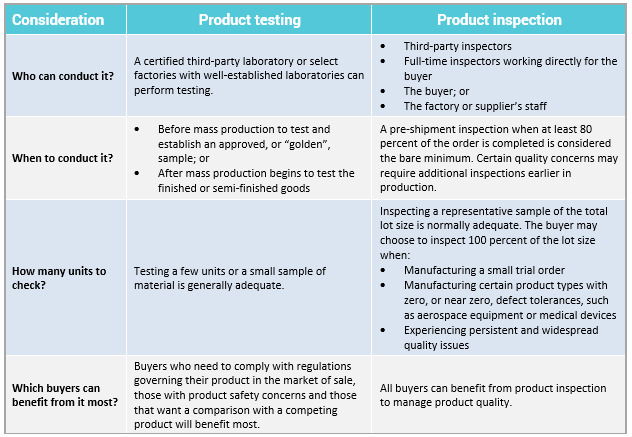One isn’t necessarily better than the others, but there are factors to consider before making a decision. No matter which method you prefer, it’s important to understand every approach at your disposal in case one might be better or inspire you to modify your own method. There’s also something to be said about trying everything — product sourcing is a field that rewards both diligence and curiosity, so leave no stone unturned.
#1 – Wholesaler
This option is ideal for sellers who aren’t going to manufacture or assemble their products themselves. It’s also great because it allows you to scale your business. In other words, you can add more products as your brand grows and your customers want more.
Pros and Cons: Working with a wholesaler allows you to sell unique products without committing the time required to make them yourself. However, when you go this route, you’ll likely have to invest more upfront because many wholesalers require you to buy products in bulk. You’ll also sell the same products many other retailers are selling which means stiffer competition.
Sourcing Products: You may have to do some online research to find a wholesale supplier who offers the type of products you want to sell. Consider a supplier like Alibaba, that offers a huge product catalog for online retailers. An online directory is also a good place but is time-consuming to sort through. Finding the right partners means your business will run much smoother, so the time is well spent.
#2 – Manufacturer
For many ecommerce retailers, working directly with a manufacturer is great because it cuts out the middlemen – typically trading companies. It is also great to build relationships with those open to private label or white label products. However, establishing a professional relationship with manufacturers can be a challenge.
Pros and Cons: It’s common for manufacturers to require minimum order quantities (MOQ) that depend upon the product. That means that while you may be able to get your products for lower costs than with a wholesaler, you may still have to buy in bulk for manufacturers to want to work with you. This can make it difficult for smaller businesses that have smaller budgets.
Sourcing Products: Like finding wholesale suppliers, you may have to search online for manufacturers that you want to work with. Additionally, you may want to consider attending trade shows, expos, and other industry events near you. These events will allow you to meet face-to-face with manufacturers (and wholesalers, too).
#3 – Handmade Products
Handmade goods are all over the internet, and there are lots of buyers who are looking for unique, hand-crafted products. Many artisans can make a living selling handmade items online. If you are thinking about going the DIY route, there are some things to consider.
Pros and Cons: One of the biggest perks of selling DIY products is that no one else will be selling exactly what you are. And, you will have complete control over your brand and your inventory. The factors to be concerned about when selling DIY products are your time and the scalability of your business. Making your own products to sell takes time. So, you must consider whether you will still have enough time to run your business effectively. Additionally, you have to consider if sales really take off and the demand for your products increases quickly. Will you be able to keep up? What is your plan B?
Sourcing Materials: Your first step is to source the materials you’ll need to make your products. You may already have a source, or you may need to visit craft stores or sites, flea markets, estate sales, or other retail stores. Identify all the materials you need, where you’ll get them, and how much they’ll cost. That will help you price your products.
#4 – Dropshipping
Dropshipping is a hands-off product sourcing method that allows you to list products to sell from a supplier and pay for them when they sell. Once the sale is made, the supplier sends out the order to your customer. You never have to handle the items at all. When you use dropshipping, you can start an online store quickly and have access to an endless variety of products.
Pros and Cons: The hands-off part of this sourcing method means that you don’t have to handle inventory, packaging, or shipping. The drawback is that you’ll have more competition because you won’t be the only retailer selling those products. You’ll also typically have lower profit margins with dropshipping, so you have to sell more products to make a good profit.
Sourcing Products: When you’re using a dropshipping supplier, sourcing dropship products is simple – you have access to thousands of options at your fingertips. You should, however, spend some time researching and evaluating the suppliers you’re interested in using. Make sure that the products meet your quality standards and that the company is reputable and has good customer reviews and feedback.
#5 – Existing Marketplaces
An obvious place to look for products is existing marketplaces — Amazon, eBay, Shopify, Etsy, etc. Depending on your search abilities and your product range, you may be able to procure products from another seller, raise the price, and make a profit… although that’s rare.
The real advantage of checking around these sites is market research. What products are people most excited about? How much are customers willing to pay for them? Which products sell well but have room for improvement in their marketing?
The more you know about the market you’re selling in, the better you can tailor your strategy to accommodate it.
#6 – Trade Shows
Another great option includes trade shows, conferences, and exhibitions. The single goal of these large-scale events is to introduce retailers and suppliers, showing off new and/or unknown products that sellers may not have known about prior.
These trade shows largely depend on your industry as well as your location. The more niche your market is, the more you rely on these to keep your finger on the pulse of your community. Conversely, the more mainstream your product line, the more freedom you have to explore other avenues.
#7 – Product Sourcing Companies
Product sourcing companies are professional middlemen — you hire them to do the product sourcing for you, hopefully delivering the best products at the best prices without you having to lift a finger. The cost of hiring a third party digs into your profits, so this method is only recommended for companies that don’t have the time or resources to do it themselves. Basically, you’re outsourcing your product sourcing.
The trouble with product sourcing companies is the potential scammers. The effectiveness of their claims varies, so pay close attention to their reputation — there’s a lot of fly-by-night rackets posturing as product sourcing companies. Look for companies older than 3 years and with verified references. Hard sells, too-good-to-be-true sales pitches, and incomplete websites are all red flags.
#8 – Sourcing Platforms
With ecommerce as popular as it is, it makes sense there are entire online marketplaces dedicated to B2B retail product sourcing. Sourcing platforms like Alibaba are marketplaces targeted to retailers and suppliers, which is why you often see notifications like “minimum quantity of 500.”
Sourcing platforms, along with cloud-based product sourcing, are great for comparison shopping as well as convenience. However, they’re victims of their own success in that, if it’s easy for you to find the best source of a product, it’s also easy for your competitors.
#9 – Directories
We have product sourcing directories. These are similar to sourcing platforms, except directories only list out suppliers — it’s up to you to further the research and reach out to them. That’s more work for you, but it increases your chances of landing an exclusive deal your competitors don’t.
Again, be wary of scammers. Some directories let visitors browse lists for free; it’s mutually beneficial for everyone, including the directory, which enjoys a spike in traffic. Some directories charge a fee, though, so make sure they actually offer what they say beforehand to justify the expense.
#10 – Liquidation and Overstock Buying
Sourcing products with these methods involve buying from manufacturers or wholesalers who have excess stock. Typically, sellers who are trying to liquidate excess inventory want to get rid of the stock quickly, so they’re willing to charge less.
Pros and Cons: While you may be able to get products for great prices when sourcing liquidation stock, it can be hit or miss when it comes to finding it. There’s no guarantee that they’ll have a specific product you’re looking for.
Sourcing Products: You can reach out to your suppliers to see if they have excess stock at discounted prices. However, this can become tedious if you have to reach out to numerous suppliers. Your best option may be checking with online liquidation sites like Bulq and Liquidation.com.
Final Thoughts about Product Sourcing
The above ideas are meant to be a starting point for you, so don’t stop here. The main point to remember is that it’s important to find the right products to sell, and the right supplier to provide them, for your online business. The strategy that you come up with should keep your customers happy and your bottom line growing.
To learn more, check out our guide with specifics of product sourcing for each business model. It’s important to point out that there will be plenty of overlap — most methods work for multiple models, and most models benefit from more than one method. Keep in mind that everything is fluid and flexible. The perfect plan for you might be a combination or mixture of the individual plans we outline in the guide.






